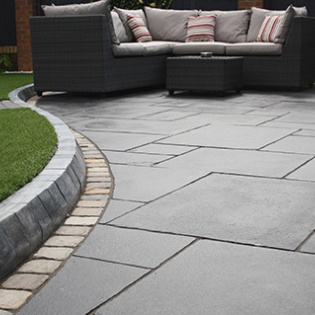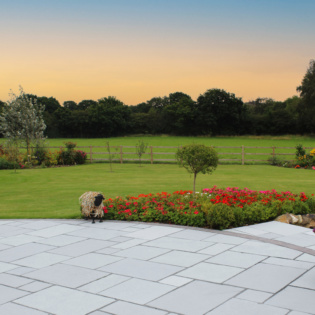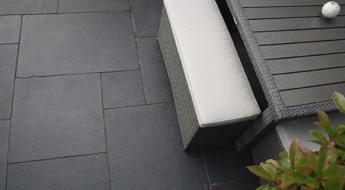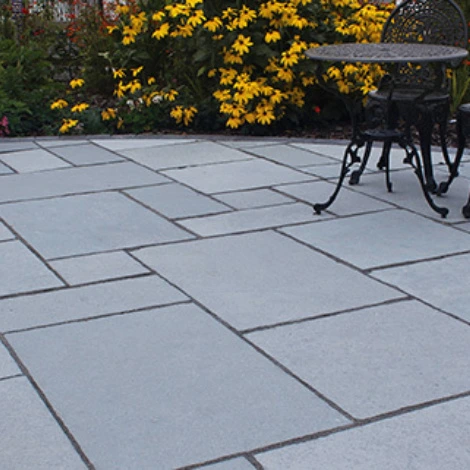Indian Limestone Pavers for Patios & Pools
WHY CHOOSE INDIAN LIMESTONE PAVERS
- Refined & Consistent: Smooth textures and clean edges offer a sleek, modern finish with natural charm.
- Cut for Easy Installation: Calibrated for uniform thickness, saving time and effort on every project.
- Slip-Resistant Surface: Naturally textured for safer walking surfaces around pools, patios, and walkways.
- Long-Lasting Durability: Dense and low-porous, Indian limestone resists weathering, fading, and erosion.
- Low-Maintenance: Stays cleaner for longer and requires less sealing than more porous materials.
- Sustainably Sourced: Ethically quarried and selected for quality, consistency, and environmental standards.
FREQUENTLY ASKED QUESTIONS
Do limestone pavers stain easily compared to other stones?
Limestone is naturally porous, so it can absorb oil, wine, or acidic spills if left untreated. However, sealing your pavers creates a protective barrier that dramatically reduces staining and simplifies cleanup.
Is limestone slippery when wet, especially for poolside use?
No — our Indian limestone is ASTM-tested for slip resistance with a coefficient of friction rated at 1.46 dry and 0.94 wet, well above industry safety thresholds. That means it delivers excellent traction, even around pools or in rainy climates, without compromising its smooth, elegant finish.
Do limestone pavers crack in freezing conditions?
Indian limestone is dense and low-porosity, which makes it highly resistant to freeze–thaw damage, cracking, and flaking
Weeds keep growing between pavers—how do I prevent that?
Use Pavetuf Jointing Compound. It blocks weed growth, stays flexible, and won’t crack or wash out—no need for tight joints or constant re-sanding.
How does Indian Steel Blue limestone compare to Pennsylvania Bluestone?
Unlike PA Bluestone (a type of sandstone that may chip or flake along sediment layers), Steel Blue is limestone—more uniform, less prone to delamination, and better retains crisp edges and surface texture.
Why are Charcoal (black) limestone pavers in high demand?
Black or Charcoal limestone (similar to bluestone tones) offers a dramatic modern look. It’s stylish, masks dirt well, and adds sleek contrast in outdoor designs—especially for minimalist or contemporary landscapes.



